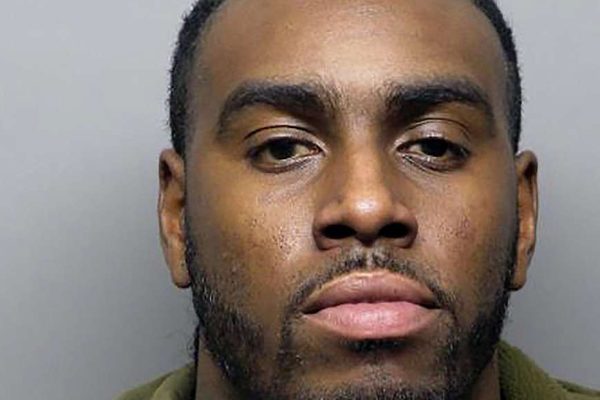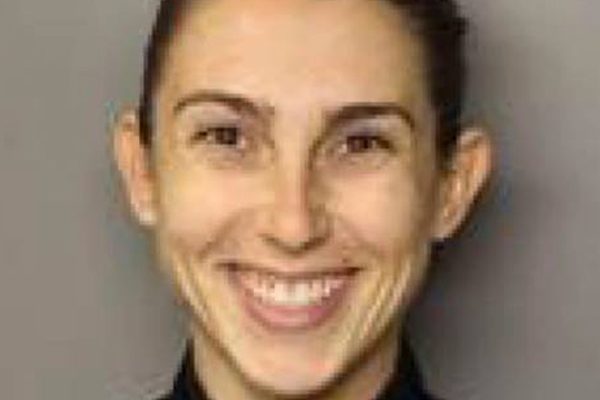MARTINEZ, Calif. – Police Shooting Death Ruled ‘Suicide’ At Inquest
By Donna Beth Weilenman
Martinez News-Gazette Reporter
Special to the Benicia Herald
The death of Benicia man who was shot by Vallejo police last year in Richmond at the conclusion of a high-speed chase was ruled a suicide, a jury at an inquest in Martinez decided Wednesday afternoon.
The decision wasn’t unanimous. Eight decided the man’s actions could be considered suicide, while four contended his death was at the hands of others in a situation that wouldn’t be defined as an accident.
The man, Jeffrey D. Barboa, 45, had a history of run-ins with police, with accusations ranging from domestic violence and violating related restraining orders to robbery and other crimes.
He had been the subject of a Department of Justice warrant, which told police he likely would be “armed and dangerous” when Vallejo Police Officer Matthew Komoda noticed Barboa’s white Honda and submitted the plate number for examination.
Normally Komoda would have a partner, but that officer was away on a transport, Komoda told the jury during the inquest, a procedure that was open to the public.
When he learned the plate was connected to a Honda that was used in a restaurant robbery in El Cerrito, Komoda began following the car and called for backup.
At the intersection of Sonoma Boulevard and Redwood Street, the suspect pulled out of line and took off speeding, said the officer who promptly began a pursuit with his lights and sirens on.
The suspect led him through the streets of Vallejo at twice the posted speeds, ignoring traffic lights. As the Honda neared Curtola Parkway, Komoda tried to halt the motorist using a pit maneuver. But he failed, only spinning the white car into Curtola Parkway.
The driver sped off, reaching 120 mph as he drove from Interstate-780 to west I-80. He began weaving in and out of traffic, and even split the highway’s lanes, damaging other cars and knocking off side mirrors as he drove on.
By then, other Vallejo officers had joined the chase, Komoda said.
He reached Richmond Parkway, having briefly driven into oncoming traffic on San Pablo Avenue during the chase. But one of his tire was damaged, and he finally stopped on the parkway, Komoda said. The police cars also stopped, parking in a staggered position.
Given the man’s previous behavior and that no traffic or barriers were before him, the officers expected the man to take off on foot, they said.
Instead, he emerged from the Honda Accord carrying a large black machete.
“He exited and squared off at me,” Komoda said. “I noticed a large machete he was holding over his head. I saw the whites of his eyes. He was yelling for us to kill him, kill him.”
Komoda said he was focused on the man and the machete. “It’s unusual for someone fleeing to turn arouind and face us and not run away when he had a clean way to run,” he said. “He threatened my life.”
He said officers told the man to drop the machete, and as the man kept stepping forward to them, they urged him, “Don’t do it – don’t do it.”
When the man got within 8 to 12 feet, well within the 21-foot distance their police training considers dangerous when a suspect is armed, the officers opened fire.
Komoda said officers are trained to aim for the “center mass” – the torso – which not only presents a bigger target, but it also reduces the chance bystanders would be hit. “We’re trained to stop the threat,” he said.
Once the man was down, officers checked his car to make sure there were no passengers, then administered aid to the wounded man, including several tourniquets as well as direct pressure on some of the injuries. But the man died.
Vallejo Police Officer Zachary Jacobsen, who was in one of the cars that joined the chase, gave a similar description from the time the Honda sped away from Komoda. He said the 120 mph ride on the curve of the Carquinez Bridge “scary,” and said the suspect’s driving was “a threat to public safety….He was hitting vehicles and causing them to split.”
While Jacobsen drove, his partner was on the radio, describing the chase to dispatchers.
Jacobsen said he also expected the suspect to run after getting out of his vehicle. Instead, the man kept approaching police. As they shouted for him to drop the machete, he answered by telling them to kill him.
“I have never seen anything like this before,” he said. He explained officers couldn’t let the man advance and get within reach of their patrol cars, which carry weapons, or the officers themselves. “We can’t retreat. We can’t let him come forward….We can’t back up.”
Dr. Ikechi Ogan, a forensic pathologist, performed the autopsy the next day, recording the 37 gunshots to his body and recovering the projectiles. In addition to those in his chest and abdomen, the man had bullet wounds to the head, neck and extremities. Some had caused fractures, he said.
None of the shots were at close range, because then he would have seen signs of gunpowder stippling, he said. He determined the cause of death came from the multiple gunshot wounds, although he also found the man had “used drugs significantly prior to his death,” specifically methamphetamine, a stimulant he said increases risk-taking, aggression and loss of control.
Vallejo Detective Matthew Mustard and Richmond Officer Lacquanna Caston described the way officers were handled after the conflict ended. The officers weren’t allowed to talk to each other or review body camera footage before giving their reports, the two said. That prevented contamination of their testimony, the explained.
Senior Inspector Eric Solzman said multiple people were involved in the officers’ briefings, to get the information in a short time.
Mustard also described some of the reasons why Barboa was the subject of a warrant. The man had returned to using methamphetamine after being clean for some time, and that led to domestic violence reports by the mother of his child, who later sought a restraining order against Barboa, which he violated.
Barboa was involved with 14 “events” with law enforcement officers during his last six months, Mustard said.
They included continuing to threaten his child’s mother. Barboa was suspected thefts from his landlord, including stealing $35,000 from a checking account, and of leaving a robbery note in the landlord’s home while the suspect was being evicted.
He apparently swung a sword at a San Luis Obispo hotel and demanded to see his son. He led police on a chase after that incident, although police ended that chase, only to arrest him later at a casino.
An incident in mid-2017 involving check fraud wasn’t pursued when the bank’s computers went down. About the same time, Barboa became a suspect in the robbery of a doughnut shop in El Cerrito and the theft of store cash registers in San Jose, Dublin, San Rafael, Pleasant Hill and Concord.
“The incidents lead up to the incident on the second of August,” Mustard said. And the same white Honda Accord was used in each of them, he said.
The jury saw a brief clip from Komoda’s body camera. It shows the suspect walking slowly toward the officers, the machete in one upraised hand, the other raised as well. The clip ended before the shooting started, but the exchanged shouts were audible.
The jury had four choices, and were limited to deciding the mode of the death, said Matthew Guichard, the hearing officer. Guichard is a member of the Walnut Creek attorney firm of Guichard, Teng, Portillo and Garrett. They were not to determine civil or criminal liability, he said.
Natural causes meant the death arose from an act of nature rather than one artificially induced.
Suicide was defined as an intentional act of self-destruction by someone who had sufficient touch with reality to understand the nature of the act, even if someone else was the “instrumentality of the deceased subject’s death.”
An accident would be a death caused by unforeseen or unintentional events, whether from natural phenomena or by human acts or conduct, by an unforeseen event, misfortune, loss or an act of omission.
The final choice was “at the hands of another person, other than by accident,” which was defined as an intentional act or an intentional omission to act that leads to the death of a person.
One of the younger members of the jury sided with those who believed the mode death should be the latter definition.
“He didn’t raise one hand,” he said about the hand that held the weapon. “He raised both hands.” He also believed the man may have been mentally ill at the time.
He viewed the situation as a man with a machete facing a group of officers who were shielded by their cars and had their firearms aimed toward him. He noted officers speaking of tunnel vision as they focused on the suspect and the weapon.
“They didn’t act properly to the situation,” he said, suggesting the officers wanted to eliminate the threat rather than try to help the man.
He said he partially agreed with the majority’s arguments, but was sympathetic to the suspect, saying he clearly needed help. “He didn’t know how to ask,” he said.
Another woman said she, too, didn’t feel comfortable with the majority’s decision. “I don’t feel it was completely a suicide,” she said.
“There was a bit of debate,” said a nurse who was on the jury. She was one of those who decided the man’s death was by suicide. “I feel the majority came to a good decision.”
She said she considered the facts as she heard them from witnesses. “He was holding a weapon,” she said.
Even though the video showed the man had both arms up, he didn’t comply with officers’ orders to drop the machete, she said. Nor did he stop advancing on police, although he was doing so slowly, she said.
She took note that officers’ saw the suspect had wide-open eyes, which she said could have a mental health or chemical cause.
“Hindsight is 20-20,” she said. “We don’t know. I wasn’t there. We were looking at the evidence, and I felt it was a fair decision.”
“These are very important hearings,” Guichard said after he heard the jury’s decision. “Jury duty is important – it’s an important process.”



I knew this individual. This story is bogus. It is full of lies. I thought you shot him in his mid section?! Why does he have gunshots to the head!!! Tell the truth.